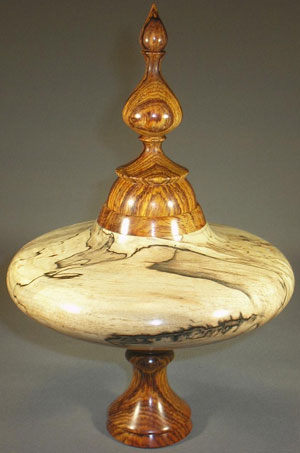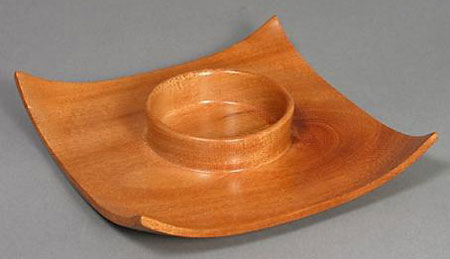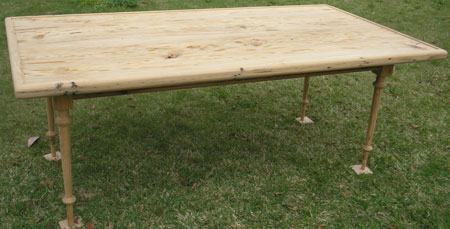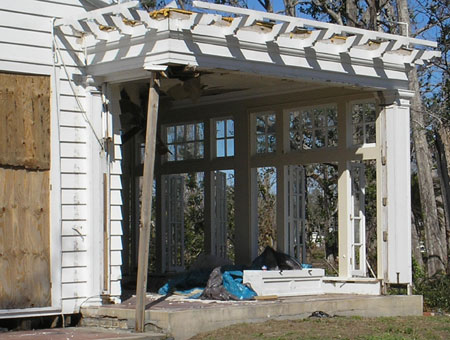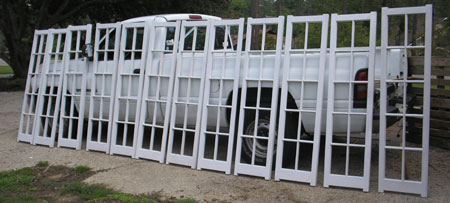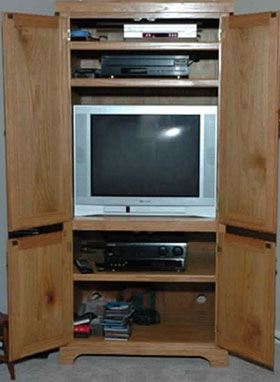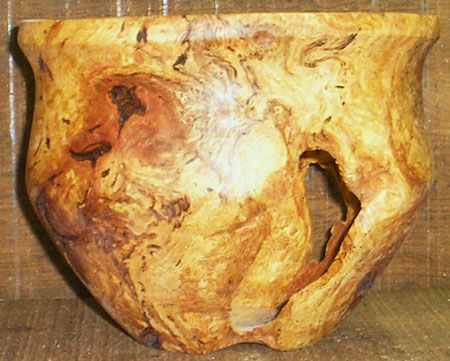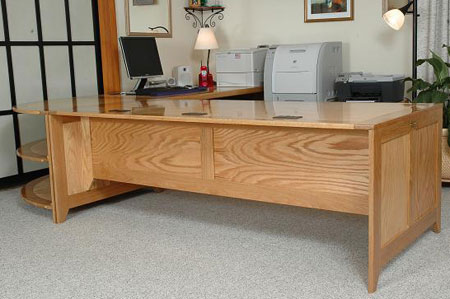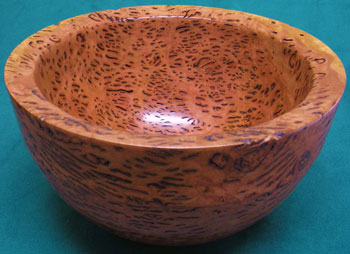
Michael Gaule has been through a lot in his life – and so has his woodworking. The former French Quarter chef lost a home, damaged a shop and missed out on some great downed wood after Hurricane Katrina hit New Orleans – and this was after becoming disabled and choosing woodworking as a second career.
Michael’s first career was as the owner of a creole and Cajun restaurant, which was written up in Esquire magazine for his blackened catfish. Then, about 15 years ago, he developed an unidentified nerve disease that killed the nerves in his arms and legs and caused him to lose strength in his limbs. Initially diagnosed with Lou Gehrig’s disease, Michael spent six weeks in the hospital and three months in therapy learning things like how to walk again. “I was like a big baby,” he said.
His original second career plan was a degree in hotel and restaurant management, but he got fed up with the limitations limitations imposed by the class schedule to which his doctor restricted him and frustrated by dealing with his school’s disability services office, and turned to woodworking in earnest.
I just love wood,” Michael said. “I love being able to create things; I love the smell; I love that there’s 60,000 woods in the world. It’s always fascinating.” His most recent focus has been on turning, but he’s also done custom cabinetry, moldings and, after Hurricane Katrina, windows and doors.
He takes particular joy in clients’ reactions to his pieces,and in solving their problems. For example, he used his Williams & Hussey molding machine to replace six feet of an architectural molding from an1800’s-era house. “That way, they didn’t have to replace the molding in the entire house,” he said.
Michael solves his own problems, too: his disability means that he must turn, for example, while sitting down. “It’s harder to hold the tools, but at least I can do it,” he said. He’s added larger handles to his turning tools so that he can hold them better; placed chairs at his band saw,sharpening station and table saw, so that he can always find somewhere to sit down in his shop; and created several different kinds of push sticks and jigs.
One jig holds cabinet doors while he cuts them on the table saw, since he doesn’t trust himself to hold them still; another, featured in the Tricks of the Trade section of the October 2009 print Woodworker’s Journal, holds a workpiece on-edge.
For the most part, Michael said, he is self-taught as a woodworker, via DVDs, CDs, books and magazines. Although there were no shop classes available through his high school, part of his college experience did include a class where he built an old-fashioned icebox.
Michael did salvage that icebox and his other furniture from his New Orleans apartment following Hurricane Katrina, but lost other possessions. He had evacuated to a sister’s Washington, D.C., home, and didn’t get back in to his second floor apartment until the October following the August hurricane. No windows were broken, so no one had previously entered the apartment – but the water had come in through the balcony. “There was so much water in the apartment shelves actually collapsed,” he said. “The mold was five feet up the walls.”
His shop, located at his parents’ house in Mississippi, didn’t flood, but suffered wind and rain damage. As the rain blew sideways, it created water spots 16 feet into the shop, and a 4’ x 8’ plywood door blew off the shop. “Of course, the door came off in front of the TV cabinet I was building. I was just applying the moldings to it. It got pretty beat up,” Michael said.
The neighbor who was the client for the TV cabinet found the door, about 100 yards down the road. “He got a sneak peek at his cabinet,”Michael said. Luckily, the damage was superficial, and Michael was able to repair the cabinet, which features a lazy Susan on top for the television, a storage drawer underneath the turn table and doors in the front to house a media center.
After the hurricane, Michael tried to salvage downed trees – “I had plans for these trees,” he said – but ran into difficulties like finding portable sawmills capable of cutting 32” diameter red oaks, and finding storage space. “My mother said no more logs on the lawn.” In part because of that experience, Michael has now purchased a house on five acres at New Orleans. “Heaven forbid, if it ever happens again, I’ve got a place to put those trees.”
His new house also has an abundance of pecans and hardwood trees – even though those aren’t Michael’s favorites for woodworking. Instead,he tends to prefer more exotic woods, including zircote, zebrawood, cocobolo and purpleheart and, for turning, African blackwood and Australian burls like red mallee and white top.
Plus, Michael’s building a new shop on that property – in part because his current shop at his parents’ is too small. “Right now, I have to move machinery to do anything, and it’s too difficult for me.” He’s not accepting orders for many larger projects until he gets the shop built – which,in some cases, works out.
For instance, he has a client for whom he had built a custom office workstation, which she wholeheartedly loved, and delivered it three months before Hurricane Katrina. “Three months later, it was gone. She couldn’t save anything out of her house.” Although the client’s living situation has been with relatives or in small apartments where she doesn’t have room for it yet, she calls Michael every so often and “wants to know if I still have the plans for her desk.”
